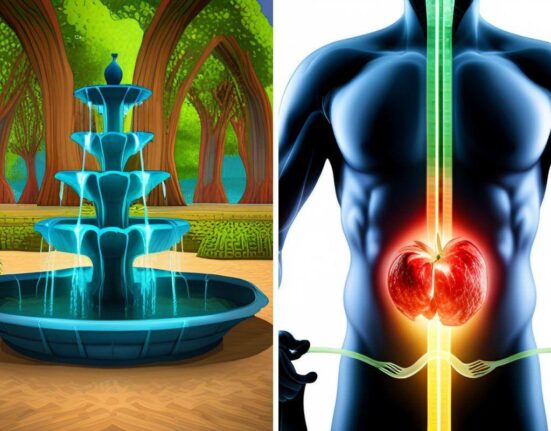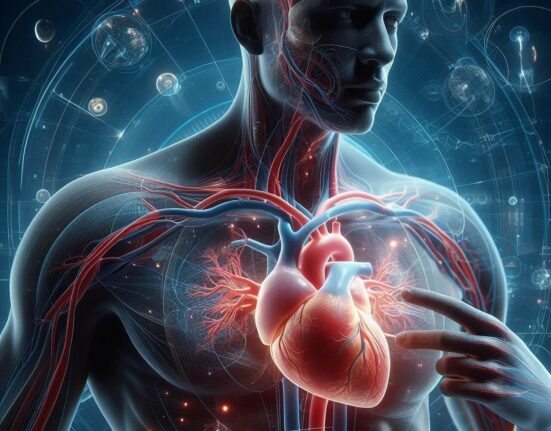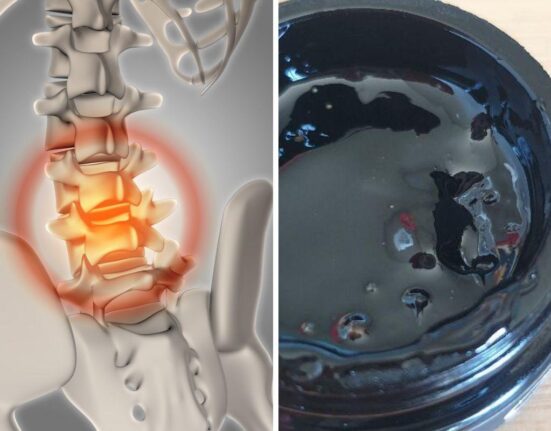Migraines are not just a headache or to be dismissed as a headache phase. If you’re one of the many migraine sufferers, you know that they can completely ruin your day. And considering the lasting effects that can occur with a migraine hangover, a migraine attack can affect some people for days or more.
Even though migraines are pretty common, about 12% of the population gets them, migraine attacks are still not very well understood. So we asked some experts to break down the different stages of a migraine, from the early warning signs to the debilitating pain. Here’s what you need to know.

The four stages of a migraine
Believe it or not, migraines are more than just a severe headache! In fact, there are four stages that are quite defined of this complex neurological disorder. They usually take anywhere from 4 to 72 hours to progress from one stage to the next and can range from extremely mild pain to severe intensity.
Prodrome Stage
This stage can start up to 24 hours before onset and can include changes in mood, energy levels, and food cravings.
In the prodrome phase, you might notice subtle changes that some, not every person, may get warning of upcoming migraine, including:
- Mood changes ranging from happiness to depression
- Craving food that is often not healthy
- Neck stiffness
- Constipation
- More frequent urination
- Bloating caused by fluid retention
- Frequent yawning

Aura Phase
Aura is the next phase where flashing lights or blurry vision that appear for 10-30 minutes before pain begins. Each symptom can gradually build up over several minutes and can last 20-60 min. These aura symptoms are followed by the headache itself that migraine sufferers experience:
- throbbing pain including various potential body aches
- nausea
- vomiting
- pins and needles sensations in the limbs
- difficulty speaking
- sensitivity to light including visual disturbances, seeing things
- uncontrollable movements, jerking
- sensitivity to sound, or hearing noises or music
Attack Stage or Headache Phase
The third stage of a migraine headache is the attack phase when the pain begins in the head and often spreads to other parts of the body. It’s most commonly experienced as:
- a throbbing, sharp, or pulsating pain on one side of the head
- nausea
- vomiting
- sensitivity to light or sound

People may also experience a combination of:
- lethargy
- fatigue
- sleep disruption. The headache can last anywhere from several hours to several days and typically comes with a series of other symptoms as mentioned in this article that can occur before or after it.
In some cases, attacks can be more severe and require medical attention. Migraine disorder is common and characterized by regular episodes of throbbing head pain. They’re usually caused by an underlying cause that needs to be treated but can vary in severity from person to person. Some people may experience only mild attacks while others may experience frequent bouts of debilitating pain.
Postdrome Stage
The postdrome stage occurs once the migraine attack subsides. Those who have gone through it often describe feeling drained and disoriented afterwards. Many call it a migraine hangover stage. Migraine symptoms may also be the combined effects of taking medication for the migraine attack itself.
Common postdrome symptoms can be some or all of the following:
- nausea
- sensitivity to light
- fatigue
- dizziness
- body aches
- feeling as if you are in a mental fog
- experiences of difficulty concentrating
While chronic migraines are an unpleasant experience at best, knowing these stages may help you better manage them when they inevitably come around!
Related Blogs
Can I wrap chicken in foil in an air fryer?
How to identify each stage
Identifying each stage of a process can be intimidating, especially when you don’t know what to expect. But fear not! With these simple tips, you’ll soon grasp the basics.
- First, evaluate the sequence of steps required to see the entire process through. Again, a food diary is very helpful with this.
- Pay attention to causes and effects – make sure that nothing is left out!
- Then break down each section into its components so you can better understand how all parts relate to one another.
Once you recognize the triggers and consequences of each step, you’ll have a clear view of each stage.
Why am I getting multiple migraines?
There are many potential triggers for why people get migraines, many are environmental.
Environmental causes
- Extreme weather
- Air pollution
- Strong odors that are unnatural or chemical in nature like perfumes and colognes. Learn how to make your own natural cleaning products to take harsh cleaners out of your daily life equation.
- Sudden changes in temperature
- Sudden differences in pressure

- Bright lights, or too much screen time, in which wearing blue light glasses can help
- Loud noises
Food and drinks culprits
Some foods add to migraine progression. Keeping a headache diary that tracks what you have been eating and at what time will help you to better understand if it may be certain foods or drinks that are the catalyst to these severe headaches. What foods should you avoid if you have migraines?
Commonly reported migraine triggers include:
- alcohol, especially red wine and beer
- chocolate. Learn how certain additives in some American mass produced brands, especially chocolates that are not made in Europe, are a trigger for migraines
- aged cheese
- cured meats

- smoked fish
- yeast extract
- food preservatives that contain nitrates and nitrites
- artificial sweeteners
- monosodium glutamate (MSG).
Steering clear of processed foods will help you to avoid most of the items on this list.
Treatment options for each stage of a migraine
Suffering from migraines can be debilitating, however, there are now more treatment options than ever depending on what stage of the migraine you’re in like:
- over-the-counter medication
- natural pain relief options like concentrated turmeric formulations
- lifestyle changes

- specialty treatments like nerve blocks or biofeedback therapy
Treatment for a migraine during its early stages should usually focus on avoidance (like avoiding triggers) and pain relief methods like medications.
Prevention strategies become important when frequent episodes are experienced, and these can include:
- dietary changes
- Supplements
- Peppermint and ginger essential oils
- Botox injections
- antidepressants – Please take note, if a doctor recommends antidepressants, this should be the last resort. It is not a good solution at all, as these types of medications are known to cause migraines too!
Tips for managing migraines
Migraine pain doesn’t have to be debilitating. Learning about all the different treatment options for head pain that may work is liberating when you need choices. Depending upon what stage of a migraine attack you’re experiencing will determine how it should best be treated.

Early stages could benefit from avoidance techniques combined with pain relief methods such as medications while prevention strategies might become necessary when frequent attacks occur, including dietary changes/supplements.
If symptoms persist longer than three days then make sure consult with an expert who’s able to provide professional advice tailored specifically towards your needs so they get under control faster rather than later!
In addition, some helpful tips include:
- getting adequate rest each night by creating regular sleep patterns
- minimizing any potential food triggers through one’s diet if possible
- relaxation exercises either like yoga or deep breathing
- Not forgetting about the importance of stretching and easy ways to stretch at home.
- Having a flexible body is an underappreciated way to manage migraine headaches. Stretch your legs, back and neck daily, as well as the rest of your body.
- Drink hydrating and detoxifying lemon water to keep your digestion and energy on track.

When to see a doctor about a migraine
If you experience migraine symptoms frequently or if one migraine lasts for more than three days, it may be time to consult with your doctor. Not only can seeing a doctor help identify possible triggers and provide you with options for preventing future attacks, they may also suggest medications that reduce the severity and duration of migraines.

It’s important to seek professional advice sooner rather than later because practically any symptom could potentially mean something serious and getting help as soon as possible is key to managing one’s health.
Concluding thoughts about the 4 stages of a migraine
Migraines can be a difficult and debilitating condition to live with, but there are steps you can take to lessen the intensity of your symptoms. Keeping a headache diary is one way to identify potential triggers and understanding which treatment options might work best for different stages of migraine attacks will help in managing them more effectively.
It’s also important not to forget about lifestyle changes like getting enough sleep, relaxation exercises like taking a serene shower, stretching or dietary adjustments that may have an impact on reducing their frequency.
If these strategies don’t seem to provide relief then it may be time to consult with your doctor who could suggest other medications or treatments tailored specifically towards your needs. With the right combination of care and actionable tips, migraines won’t have such a negative effect on our lives anymore!
More from the wellthieone.com
The links used on thewellthieone.com are affiliate links, which may provide a small commission. This does not increase the price of the goods for the consumer whatsoever. What it does is ensure that useful content like this can continue to be produced. Thank-you for enjoying our content and allowing us to continue to provide more.







